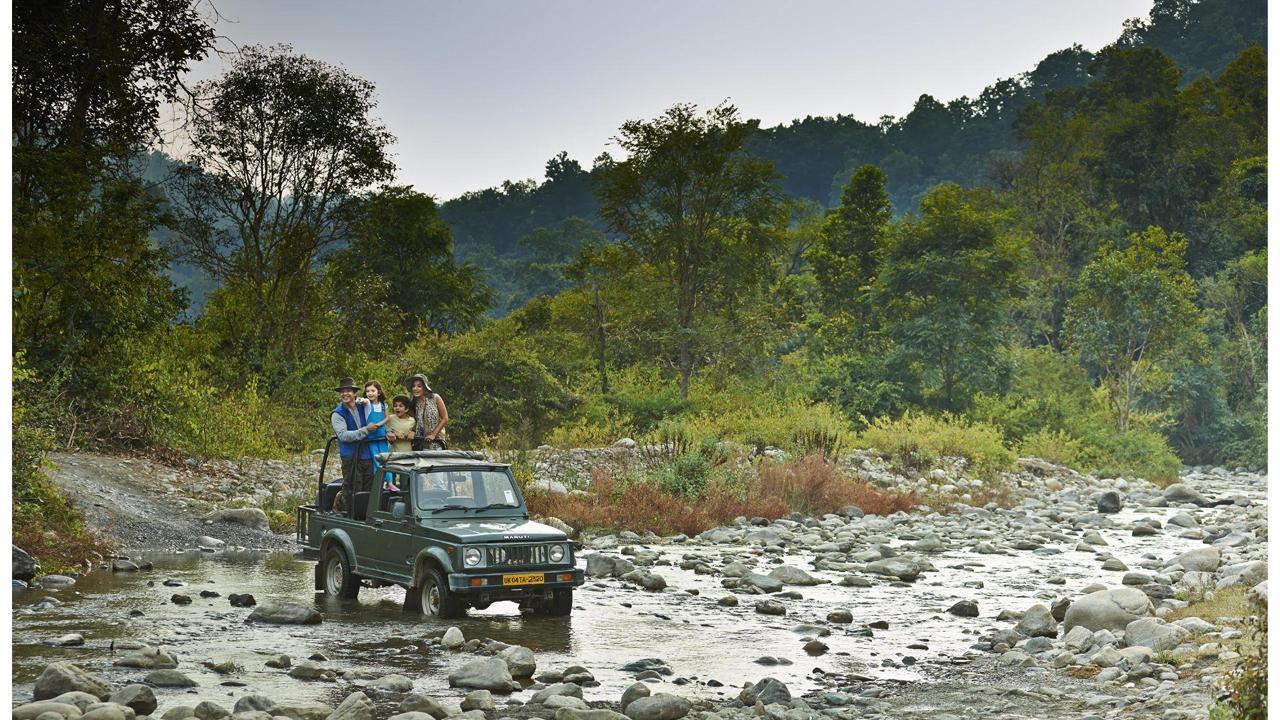
Representational Image
Wish to unite with nature and be amazed by rich biodiversity? Visit the Jim Corbett National Park. You'll spot myriad species of flora and fauna and get the best opportunity to click wonderful pictures to capture the biodiversity.
ADVERTISEMENT
Importance of Biodiversity
- Ecological life support: Trees and plants, a major part of biodiversity, supply oxygen, reduce pollution and prevent soil erosion.
- Economic benefits: It provides raw materials for our consumption plus production. Many livelihoods like those of timber workers and industries like the tourism industry depend on biodiversity.
- Recreation: Biodiversity is the source of several recreational activities like camping, hiking, fishing, and birdwatching.
- Scientific benefits: Biodiversity provides us with vital ecological information to understand nature and its origins.
Jim Corbett: Experience Unique Flora & Fauna at Every Step
Here are 4 kinds of flora and 4 fauna that make the Jim Corbett Park appealing.
- Trees
Sissoo, khair and sal are the most common trees found here. Banj oak, a Himalayan evergreen tree grows near Kanda. Chir pines are the sole conifers in Jim Corbett. They grow on ridge-tops, such as chir choti and in low elevations like Gajar Sot. Palms include date palms (khajur) in open areas. A rare palm of the Eastern Himalayas, wallachia densiflora grows near Sultan. Aamla, jamun and kanju are scattered over the lower areas. Tendu grows in moist zones. Other important tree species are bakli, mahua, kusum and bel. There are several flowering trees too. Major ones are amaltas, madaar, dhak (flame-of-the-forest), semal and pink and kachnaar. Artificially planted bottlebrush, silver oak, jacaranda, eucalyptus and teak grow near forest rest houses.
- Shrubs
The most common ones are Bers growing in well-lit places. The fruits of maror phali appear like twisted spiralling pods. Karaunda produces sour fruits and pinkish-white flowers and grows under Sal. Hisar produces berry-like juicy fruits eaten by animals. Jhau is abundant in rocky or sandy soil along the Ramganga basin.
- Herbs
These include various wildflowers, mostly from Aster and Pea families. They grow on open areas, chaurs or grasslands. Drynaria Diandra with heart-shaped leaves are found in moist areas. Bhilmora that tastes sour is used to make chutney. Among other herbs are leonotis nepatafolia, solanum sp., Oxalis sp. (Clover), indigofera liniofolia and euphorbia hirta.
- Grasses
The national park houses over 70 species of grasses, mainly in chaurs. They include heteropagon contortus, neyraudia, aristida cyanantha, cymbopogon flexuosus, vetiveria zizanioides (khus khus), thysanolaena maxima (tiger grass), arundo donax (narkul), eulaliopsis binata (bhabar or baib), themeda arundinacea and saccharum sp. (kansi). The bamboos flower and fruit together once in many decades.
- Mammals
Corbett National Park has the largest population of tigers in the country. You can also see leopards, elephants, wild boars, langurs, rhesus monkeys, otters, yellow-throated martins, rabbits, and jackals. Among deer, you can find the barking deer, hogg deer, sambar deer and chital deer.
- Birds
You can see whistling ducks, white-fronted geese, red-crested pochards, rufous-throated hill partridges, jungle bush quails, red junglefowl flamingos and more. You can't help but marvel at over 600 species of birds in the park.
- Reptiles
From common krait, rock python, russel viper, king cobra to gharial, crocodiles, and monitor lizard, you can find diverse reptiles here.
- Fishes
The national park is home to different species of fish, like goonch, chiles, kalabasu, kalimuchi, katla, rohu, trout and mahseer.
Best Time to Visit
A pleasant time to visit Corbett Park and resorts is in the winter (November-February). All the zones in the park are open. So, you can come across most animals. You can also visit the park during summers as many animals can be spotted near water bodies.
Holiday Checklist
- Your ID cards
- Travel documents
- Masks and sanitiser
- Light backpacks
- A light jacket/sweatshirt (for winter morning safari), mufflers, gloves, heavy jackets (for winter evening), Cargos or Khakis, light shorts/pants and cotton shirts, sunglasses (for summer-time safari)
- Cameras, memory cards, lenses, tripods and chargers
- Flashlights
- Travel pillows
- Sanitary requirements
- Insect Repellents
- Medicines
- First-aid kit
- Extra socks and shoelaces
- A travel towel
- Dry soap
- Small diaries and pens for journaling
- Plastic bags
Why Choose Club Mahindra Corbett?
At Club Mahindra Corbett resort, you can enjoy a range of activities like bonfire camping, dining by the Kosi river and stone painting, besides nearby activities like jungle safari, touring the jungle on a cycle and motor paragliding. With luxurious amenities, like a swimming pool, children's play area and cosy rooms overlooking the river, your stay at the resort makes your trip much more special.
How to Book Your Holiday
Visit www.clubmahindra.com. Provide necessary details like name, mobile number, etc to get in touch with a holiday expert. The holiday expert will help you with the Club Mahindra membership details and further process.
Take a 360° virtual tour of the Club Mahindra Corbett resort. Click on "Member Login". You can else log on to their mobile app.
Use your membership number as your username. Then create a password.
After being directed to your dashboard, select the Corbett resort. Check on the digital calendar whether the resort is available on the desired dates. After confirming them, select "Book now".
 Subscribe today by clicking the link and stay updated with the latest news!" Click here!
Subscribe today by clicking the link and stay updated with the latest news!" Click here!







